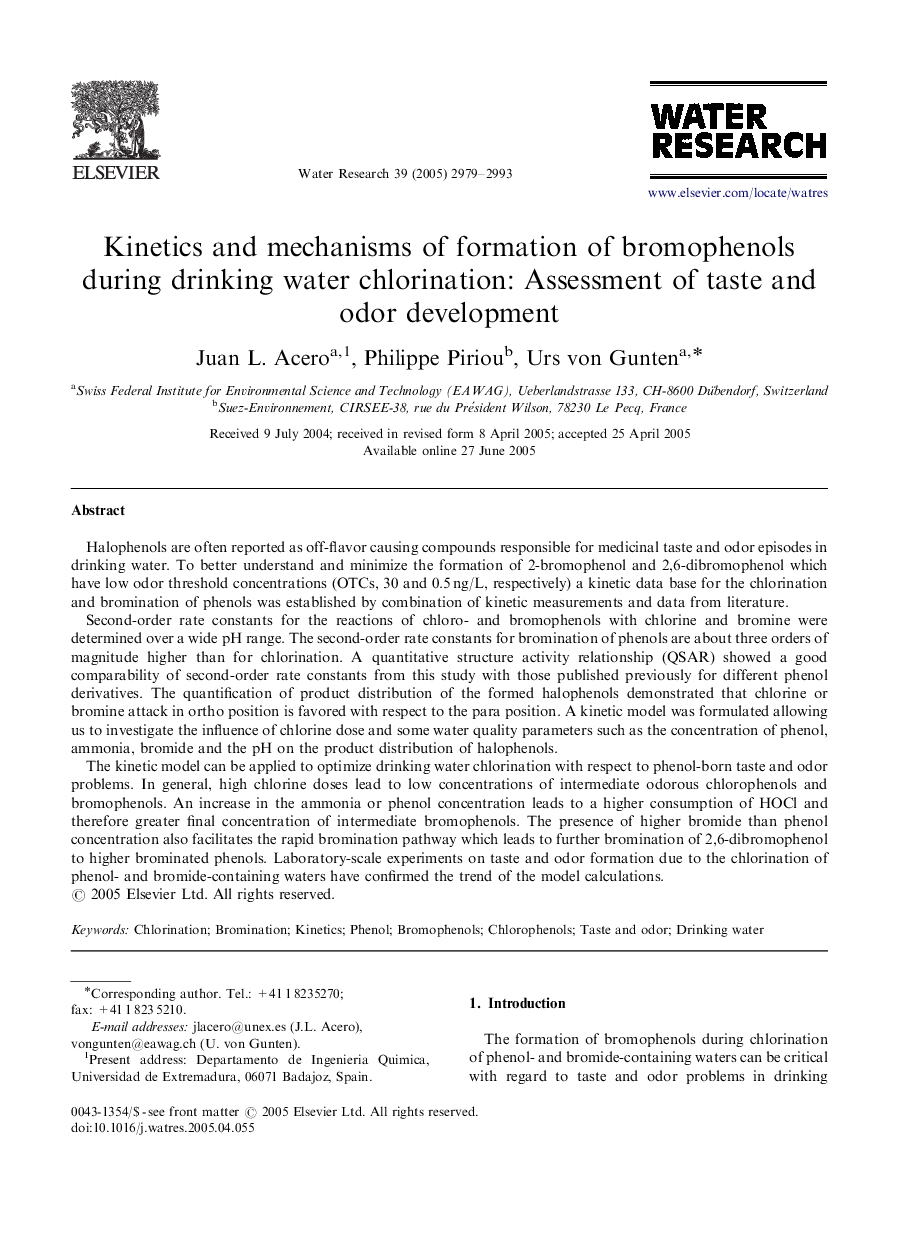| کد مقاله | کد نشریه | سال انتشار | مقاله انگلیسی | نسخه تمام متن |
|---|---|---|---|---|
| 4486835 | 1317002 | 2005 | 15 صفحه PDF | دانلود رایگان |

Halophenols are often reported as off-flavor causing compounds responsible for medicinal taste and odor episodes in drinking water. To better understand and minimize the formation of 2-bromophenol and 2,6-dibromophenol which have low odor threshold concentrations (OTCs, 30 and 0.5 ng/L, respectively) a kinetic data base for the chlorination and bromination of phenols was established by combination of kinetic measurements and data from literature.Second-order rate constants for the reactions of chloro- and bromophenols with chlorine and bromine were determined over a wide pH range. The second-order rate constants for bromination of phenols are about three orders of magnitude higher than for chlorination. A quantitative structure activity relationship (QSAR) showed a good comparability of second-order rate constants from this study with those published previously for different phenol derivatives. The quantification of product distribution of the formed halophenols demonstrated that chlorine or bromine attack in ortho position is favored with respect to the para position. A kinetic model was formulated allowing us to investigate the influence of chlorine dose and some water quality parameters such as the concentration of phenol, ammonia, bromide and the pH on the product distribution of halophenols.The kinetic model can be applied to optimize drinking water chlorination with respect to phenol-born taste and odor problems. In general, high chlorine doses lead to low concentrations of intermediate odorous chlorophenols and bromophenols. An increase in the ammonia or phenol concentration leads to a higher consumption of HOCl and therefore greater final concentration of intermediate bromophenols. The presence of higher bromide than phenol concentration also facilitates the rapid bromination pathway which leads to further bromination of 2,6-dibromophenol to higher brominated phenols. Laboratory-scale experiments on taste and odor formation due to the chlorination of phenol- and bromide-containing waters have confirmed the trend of the model calculations.
Journal: Water Research - Volume 39, Issue 13, August 2005, Pages 2979–2993